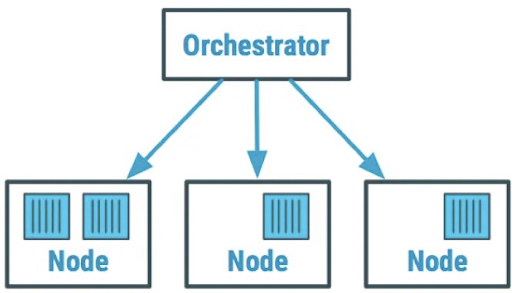 1-800-805-5783
1-800-805-5783 
Microservices architecture has gained popularity in recent years, allowing for increased flexibility, scalability, and easier maintenance of complex applications. To fully realize the benefits of a microservices architecture, it is essential to ensure that the deployment process is efficient and reliable. Containers and container orchestration can help achieve this.
Powerful tools like microservices, containers, and container orchestration can make it easier and more dependable for product engineering teams to develop and deliver software applications.
Containers are a lightweight and portable way to package and deploy applications and their dependencies as a single unit. They allow consistent deployment across different environments, ensuring the application runs as expected regardless of the underlying infrastructure.
Scalability, robustness, and adaptability are just a few advantages of the microservices architecture, which is growing in popularity in product engineering. However, creating and deploying microservices can be difficult and complex. Container orchestration and other related concepts can help in this situation.
Container orchestration is the process of managing and deploying containerized applications at scale. It automates containerized applications’ deployment, scaling, and management, making managing and maintaining many containers easier. Container orchestration tools like Kubernetes provide a powerful platform for deploying and managing microservices.
Containers and orchestrators are crucial when implementing microservices because they eliminate the issues from a monolithic approach. Monolithic apps, on the other hand, must be deployed all at once as a unified whole.
This will result in the application being unavailable for a short period, and if there is a bug, the entire deployment process will have to be rolled back. It’s also impossible to scale individual modules of a monolithic program; instead, the whole thing must be scaled together.

These deployment issues may be addressed using Containers and Orchestrators in a microservices architecture. Containers allow the software to run independently of the underlying operating system and its associated software libraries. You can use the software on any platform. Since containers partition software, they are well-suited to microservices deployments.
Containers allow for the remote deployment of microservices. Containers allow for the decentralized deployment of each microservice.
Additionally, since each of our microservices runs in its container, it can scale independently to meet its traffic demands. With containers, updates can be implemented individually in one container while leaving the rest of the program unchanged.
Managing a large number of containers in a microservices architecture requires orchestration. Orchestrators allow containerized workloads across clusters to be automatically deployed, scaled, and managed. Therefore, applying and reverting to previous versions of features is a breeze with container deployments. The microservices containerization industry has adopted Docker as the de facto standard.
Docker is a free and open containerization platform that facilitates the creation, distribution, and execution of software. Docker allows you to deploy software rapidly by isolating it from the underlying infrastructure.
The time it takes to go from developing code to having it run in production can be drastically cut by using Docker’s methods for shipping, testing, and deploying code quickly.
Docker enables the automated deployment of applications in lightweight, self-contained containers that can function in the cloud or locally. Containers built with Docker are portable and can be run locally or in the cloud. Docker images can create containers compatible with both Linux and Windows.
For complex and ever-changing contexts, orchestrating containers is essential. The orchestration engine comprises tools for developing, deploying, and managing containerized software.
Software teams use container orchestration for a wide variety of control and automation purposes, such as:
To successfully implement an MSA, businesses must be prepared to face several challenges, which include:
In conclusion, building and deploying microservices with containers and container orchestration is a powerful way to manage complex applications. Containers provide a lightweight and portable way to package and deploy applications, while container orchestration tools automate containerized applications’ deployment, scaling, and management. Service meshes, monitoring and logging, and CI/CD are essential components of a microservices architecture and should be implemented to ensure the reliability and availability of the microservices.